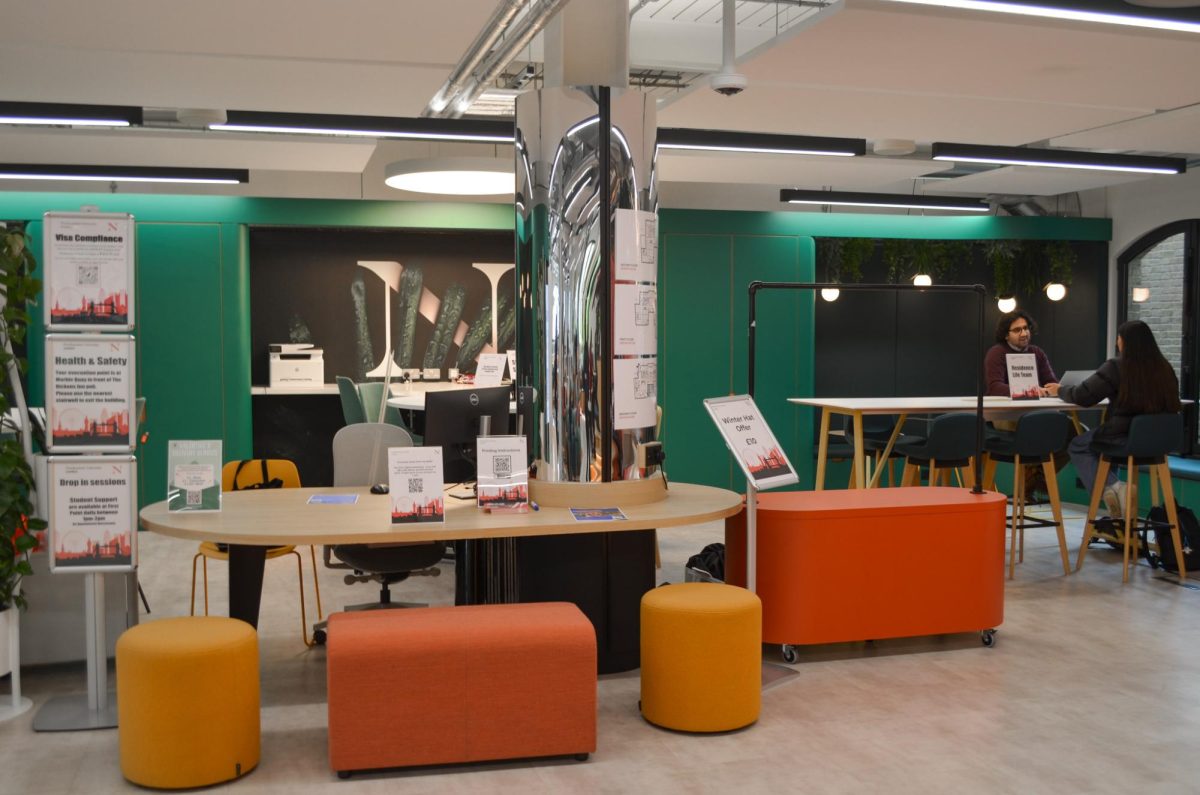By Melissa Kenyon
With recent immigration violence issues such as the terrorist attacks in Spain and England and rioting in France, the topic is not only grabbing the attention of political and social groups, but also college students.
On Friday, Nov. 3, The Brudnick Center on Conflict and Violence sponsored an all-day international conference on Violence Against Immigrants, featuring practitioners and researchers from the U.S. and abroad.
Held at the Egan Research Center, the event was organized by Dr. Jack Levin and Dr. Gordana Rabrenovic, Director and Associate Director of the Brudnick Center, respectively.
Levin said the conference provided a forum for the Center to address important issues currently affecting immigrants.
“This really was a timely conference, given the fact that we’re seeing more and more violence against immigrants both in the U.S. and in other countries,” Levin said. “It really inspired us to do this conference.”
Dean James Stellar and Vice Provost Luis Falcon were on hand to kick off the event, delivering an opening address on the importance of focusing on current violence against immigrants.
Levin acknowledged the progress being made.
“[The public] is becoming more aware of criminal behavior directed against people because they’re different.”
The conference’s keynote speaker, Vincent Parrillo, a professor of sociology at William Paterson University, spoke on the immigration characteristics of the century so far.
He said although the United States is a nation of immigrant origin itself, it has always been uncomfortable with “newcomers” – an attitude that has fueled racial discrimination and stereotyping.
Parrillo did, however, provide hope for U.S. immigrants, particularly Hispanic-Americans.
In his presentation, Parrillo said although Hispanics garner more concern in terms of discrimination and mistreatment than most other ethnic groups in the U.S., he predicts that by the middle of the century, they will be viewed by the majority of the population no differently than Irish Americans are today. That is to say, fully assimilated.
Carol Ziemian, an English professor at Northeastern, said she was particularly impressed by Parrillo’s lecture.
“The differences in the way that America and Europe respond to immigration was clearly articulated and his explanation of the role the shadows of the past play on the present was thoughtfully explained,” Ziemian said. “[Parrillo’s] emphasis on our country’s influence across the globe was key to understanding the importance of the conference.”
A panel of practitioners representing three different immigrant advocacy groups also made presentations at the conference.
Mark Potok, of the Southern Poverty Law Center in Montgomery, Ala., spoke about the influence of white supremacy at the U.S. Southern border with Mexico. Andrew Tarsy, the director of the New England chapter of the Anti-Defamation League placed the issue of illegal immigration in historical perspective, and discussed the existence of organized hate groups in Massachusetts.
Eva Millona, director of the Massachusetts Immigrant and Refugee Advocacy Coalition said immigrants who are victims of domestic violence may be especially vulnerable to racially-based violence.
In the afternoon, the conference shifted its focus to violence against immigrants in Europe, which was presented by a panel of European researchers, including Nihad Bunar of the University of Stockholm; Larry Lowenthal of the American Jewish Committee; Sophie Body-Gendrot, a professor of political science and American Studies at the University of Paris-Sorbonne in France and David Lennox, a visiting Fullbright scholar.
Though the presenters made it clear that violence against immigrants is comparatively worse in Europe than the U.S., they were optimistic for Europe’s future.
If government initiatives would support integrated education, decrease the affluence of segregated housing communities and work with law enforcement agencies to reduce hate crimes, Europe will work toward closing the gap between immigrants and native Europeans, they said.
“We tend to think of ethnic minorities as one group and everyone else as another and that’s something that we have to work on,” Bunar said.
Allison Cunningham, a middler history and international affairs major, said she appreciated the international perspective the conference provided.
“I thought that it was really informative,” she said. “It was really interesting to realize that it’s so much worse in Europe than here. The whole conference gives it a good perspective, in comparison, because what you usually hear about immigration is negative.”
Ziemian said the European portion enhanced the conference’s message, one that she feels is among the most important issues facing America and Europe this century.
“I praise the Brudnick Center for sponsoring the conference,” she said. “It is important that America and Europe share in the dialogue and brainstorm together so they can ensure that the problem does not escalate and, in time, it is resolved.”








